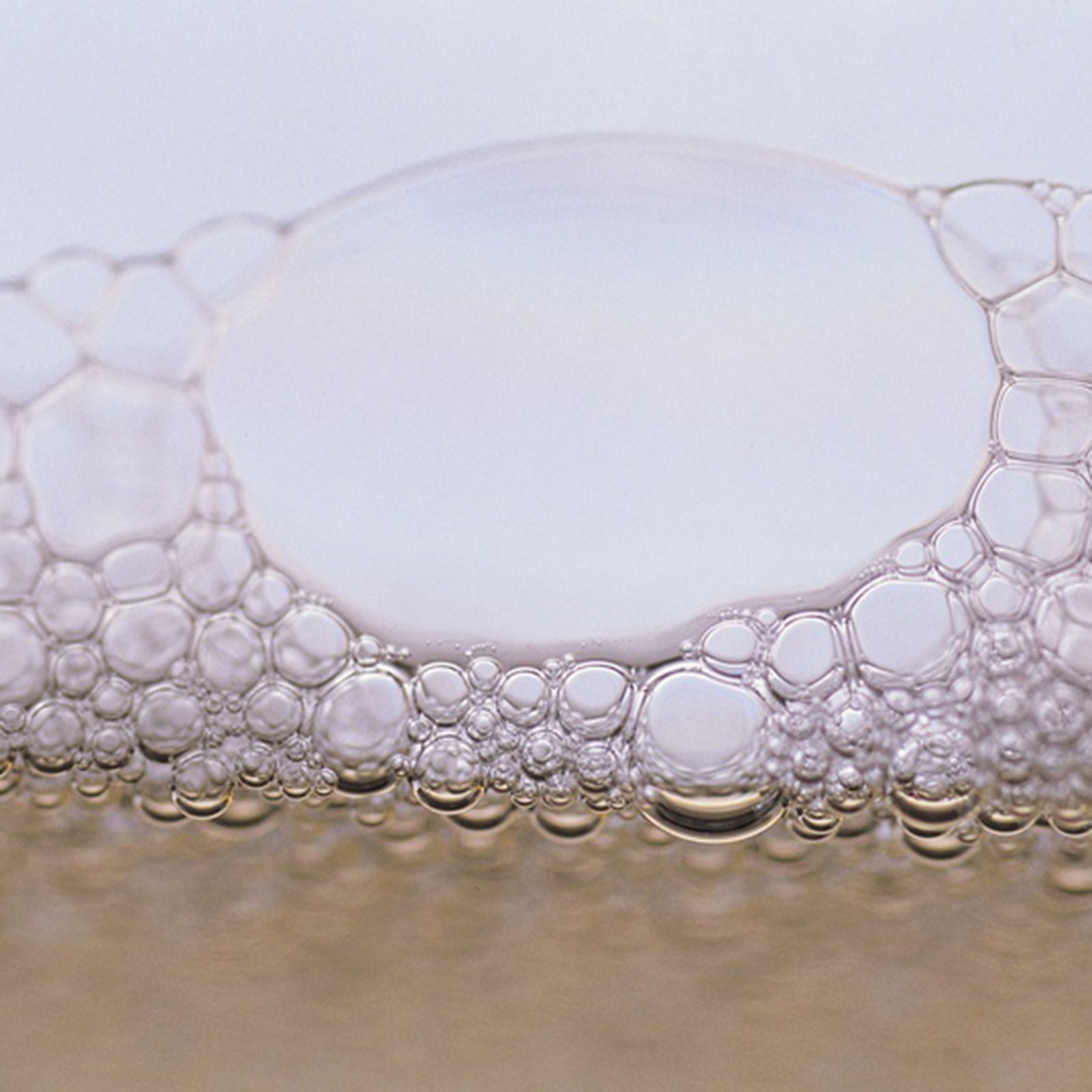How does soap clean?

How does soap clean?
Soaps and detergents both do a good job of cleaning. They are “surface active” substances (surfactants), which means that they make water better at cleaning surfaces. The water is doing most of the work, and the soap/detergent is facilitating the process. They are a help because they break the surface tension of the water, which has a very high natural surface tension…think about the beautiful photos you’ve seen of a drop of rainwater sitting perfectly perched on a leaf after a rain. It’s the surface tension that keeps the droplet intact.
Soaps and detergents burst the bubble of surface tension and allow the water to permeate fibers, flushing out dirt, oil and stains. It’s a little more complicated than that, because the soap/detergent molecules also have “tails” that are lipophilic (oil-loving) and so will attach to the grease and oils that help dirt and stains adhere to surfaces. The hydrophilic “heads” of a soap molecule remain connected to the water molecules to which they are attracted and are then easily washed away with the water, taking their dirty tails with them. A soap molecule basically goes into a grimy water bath (let’s call it a dive bar), wiggles its butt, and says “come on you dirty boys, I’ve got a better party to take you to, hop a ride with me!” And like moths to a flame, the dirt particles fall prey to soap’s unavoidable attraction…or at least that’s the way it plays in my brain.
How is soap different from a detergent?
Soap and detergents both work on the same principle. The difference is in the components that make up each substance. Soaps come from naturally occurring triglycerides (fatty acids and glycrol) mixed with sodium hydroxide. Soap is biodegradable because over time it breaks back down into its original components…which came from nature to start with.
Detergents are made from propylene (which used to be burnt off as waste by the petroleum industry) and sodium hydroxide. Propylene molecules are manipulated to form a compound that will react with sulfuric acid. Next, sodium hydroxide is added to neutralize the sulfuric acid resulting in a sodium salt similar to the one found in soap.
Detergents either do not break down at all, or are broken back down into their original petrochemical ingredients and are harmful to wildlife. That being said, if you are using even true soap in a place where the “gray water” is not being treated (like when you’re camping), always be sure to dispose of the waste water thoughtfully. The bacteria that cause soaps to break down are not present in water in sufficient amounts to allow for timely degradation. Before the stuff is degraded, damage to water and life in the water will be done. The bacteria that break down soap do live in soil in much larger quantities. That means that when you wash, make sure that all your soapy rinse water ends up in soil. Only dump your waste water in the woods away from fresh water sources like lakes and rivers.


Leave a comment